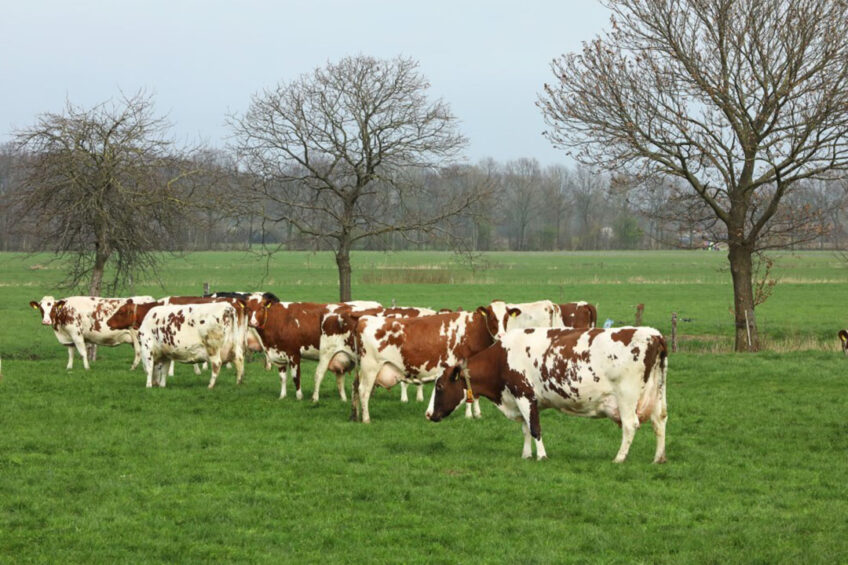Virtual fencing and cattle welfare explored

Virtual fencing systems for livestock have several potential welfare advantages over conventional electric fencing, according to a new UK government study.
The research, carried out by the Animal Welfare Committee (AWC), considered whether invisible fencing can be used without detriment to livestock health and welfare in light of the growing use of neck collars in invisible fencing systems among cattle, sheep and goats. In the UK, there are currently more than 140 virtual fencing users (mostly for cattle) and commercial systems are also in use in New Zealand, the US and Australia.
It found that with appropriate provider safeguards and operator use, there are benefits in livestock nutrition, health and welfare as well as benefits to the land being grazed. These are due to easy fenceline movement, the ability to apply audio and/or vibration cues prior to an electric shock, the ability of the system to deliver a known level of electric pulse to an individual animal and associated monitoring functions.
Human interaction and livestock
But it also warns that there is also potential for some negative effects on livestock welfare and recommends that virtual fencing and remote livestock monitoring should not replace regular human inspection.
In addition to containment and exclusion, systems may be used dynamically to move livestock from one location to another, to divide or combine suitable groups and to monitor locations. Movement functions may either use a dynamic virtual fenceline or activate vibration or audio cues on the collar or neckband, delivering an electric shock if the animal does not respond to these.
Virtual fencing systems are superseding previous loop-based invisible fencing, which had limited take-up. They have developed over the past 5-10 years with accelerated UK interest and take-up since 2019. There are likely to be ongoing improvements in collar design, battery lifespan and software functionality, but the report says that because the systems are new and developing, long-term outcomes are currently uncertain.
Livestock must be trained
It does, however, stress the importance that livestock are trained before they are virtually fenced to ensure they become familiar with the cues given by the system and learn appropriate behavioural responses.
Additional sensors adding new data to the real-time smartphone application as part of additional full herd management systems provide further uses and potential welfare gains by alerting livestock owners to potential health and welfare issues. Monitoring data could potentially be used as objective evidence of poor welfare or care as well as to demonstrate that welfare standards have been met.
Further research, it said, was needed to reliably assess the probability and importance of potential welfare gains resulting from virtual fencing, as well as the risk and magnitude of possible negative welfare impacts on livestock health and mental state.
“Virtual fencing forms part of a shift in livestock management practices towards greater automation. If used in combination with other systems, such as automated milking, automated feed dispensing systems and drone observation, it could contribute to a highly technological management infrastructure in which ongoing contact with humans is greatly reduced. This may have unintended negative livestock welfare impacts,” it argued.
But on the other hand, “they could also potentially improve the usage of stockperson time with livestock, reducing the time spent on locating and monitoring and increasing targeted engagement with welfare problems and issues.”
Recommendations for dairy cows
- Any collar placed on livestock should have a verifiable physical breaking point and be designed to be non-abrasive.
- Any future significant weight increase in collars should be subject to welfare review.
- No livestock should have more than one collar around the neck.
- No virtual fencing system should be manufactured to allow a user to deliver an intentional electric shock.
- Electric pulse strength should be the minimum necessary to control the individual animal and should always be preceded by auditory and/or vibration cues.
- Livestock that cross a boundary should always be able to return without experiencing an audio cue or electric shock while doing so.
- Manufacturers should ensure that systems permit immediate cancellation of collar control by the user when inspection of livestock reveals adverse welfare effects.
- Battery capacity and solar charging capability should be sufficiently large to avoid livestock having to be brought into handling facilities frequently for battery replacement.
- Manufacturers should clearly specify the species, type, sex and age of livestock for which their collars are designed.
- They should not be used on calves under 6 months of age.
- Stock-keepers should check collars used on growing youngstock frequently to ensure they don’t become too tight.
- In case of GPS drift, water points and necessary shade and shelter should not be located close to a virtual boundary.
- All current and future users of virtual fencing systems for containment and/or movement should have an alternative method in place in case the virtual system malfunctions or fails.
The full report can be found here.






